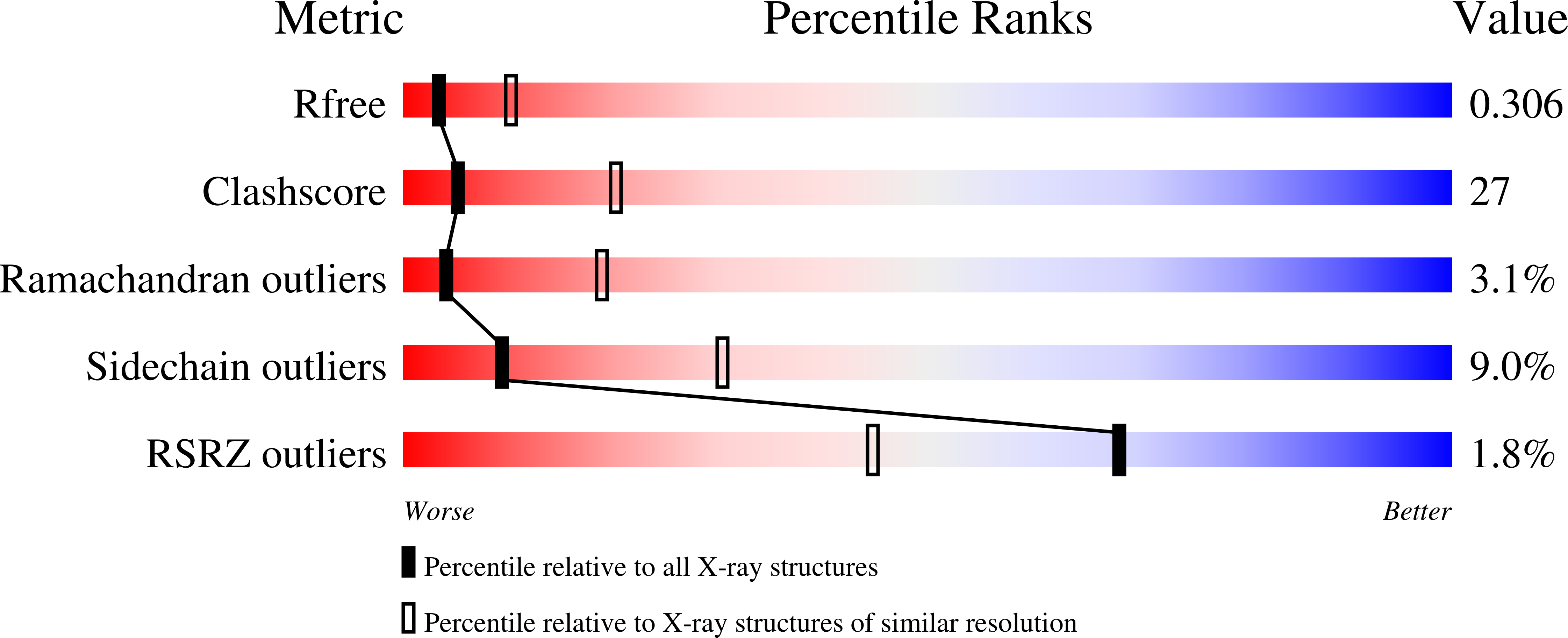
Deposition Date
2008-02-01
Release Date
2008-04-29
Last Version Date
2024-11-20
Entry Detail
PDB ID:
3C60
Keywords:
Title:
Crystal structure of mouse MHC class II I-Ab/3K peptide complexed with mouse TCR YAe62
Biological Source:
Source Organism:
Mus musculus (Taxon ID: 10090)
Host Organism:
Method Details:
Experimental Method:
Resolution:
3.05 Å
R-Value Free:
0.30
R-Value Work:
0.26
Space Group:
P 21 21 21


